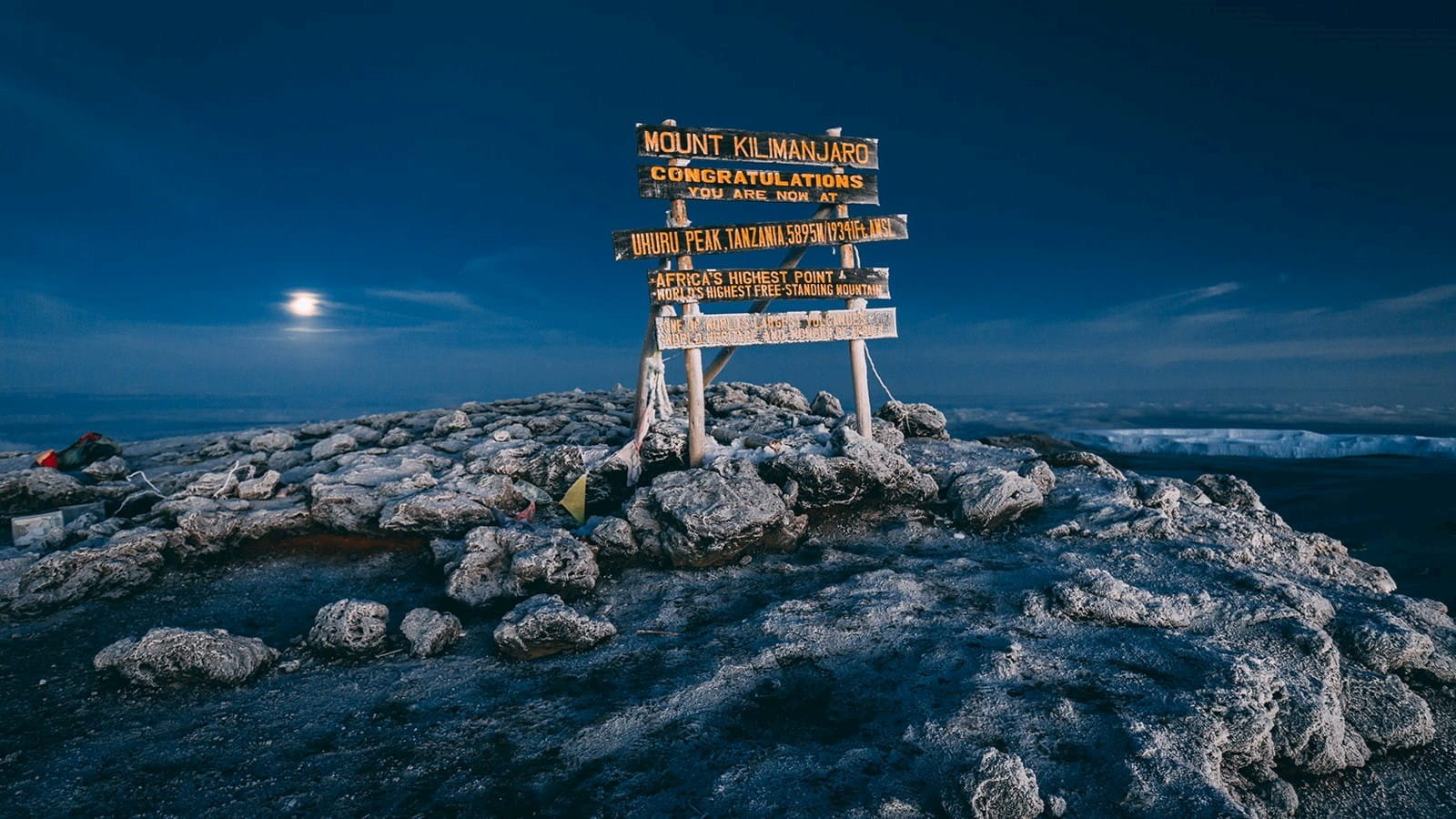Tina Riches recounts her climb on Kilimanjaro to raise money for Tax Aid and Tax Help for Older People.
Although I’m retired from paid work, I’m not sipping cocktails by a warm pool. I’m somewhere so cold you can get frostbite, despite wearing layers of technical clothing and gloves. It’s so cold your hydration pack has frozen. It’s so cold you just want to escape, yet your brain says take pictures of the extraordinary scenery. It’s so cold you want to run, not pose for a summit photo – but a guide insists you do so.
What on earth inspired me to put myself through this? Well, I started volunteering for the tax charities TaxAid and Tax Help for Older People when I retired in 2018. Some of the cases I encountered highlighted how difficult it is for people to navigate our complex tax system and how easy it is to fall through the cracks, resulting in underpaid tax and penalties, through no fault of their own. The charities help clients come through this.
So in January 2019, I suggested we did something more striking to better highlight the plight of our clients – a sponsored trip … up Mount Kilimanjaro. At almost 6,000m, it is the highest single free-standing mountain above sea level in the world, the tallest volcano in Africa, more than 1,000m higher than Mont Blanc and higher than Everest’s two base camps – and yet you can trek up it with walking poles.
This is the story of how deep our team had to dig – although probably no deeper than many of our clients have to dig every day. COVID-19 put paid to a trip in 2020 and 2021, but eventually our team of five #KiliTax2022 trekkers joined other Action Challenge clients, making a group of 16 and leaving the UK in September 2022.
The reality sank in when Kilimanjaro’s peak, at 5,895m, temptingly pierced the clouds as our plane descended to the local airport. The adventure began in earnest the following day at the Lemosho Gate, where we entered the National Park, 300 miles south of the equator, and met our fantastic support team of local guides, chefs and porters. Our route then wound through the rainforest, with the continuous backing track of Colobus monkeys and birdsong.
The going gets tough
Each of the five and a half days ascending became increasingly difficult – much tougher than most of us had imagined, despite extensive preparation. Altitude sickness set in (causing a lack of appetite or throbbing headaches) as we climbed higher and the route became more challenging, including the Barranco Wall, a near sheer cliff more than 900m high.
The final ascent and return were the toughest, with little time to recuperate as we walked overnight with headtorches to the summit. You can try that on Snowdon, but it’s only a sixth of Kili’s height.
We arrived at the summit at sunrise, before the intense sun started to melt the frozen shale we’d walked up. The temperature was close to -20°C, with a bitterly cold wind
Hallucinations were par for the course so we didn’t stop to reflect on our achievement.
The descent took a day and a half – down to an incredible welcome with singing and dancing from our talented support team, without whom most of us would never have reached the top.
We were lucky to be part of such a friendly and supportive group of trekkers. We even picked up more sponsorship on the way – having ample time to explain the work of TaxAid and Tax Help for Older People.
Three of our team were more than 60 years old, yet everyone made it to the volcano rim – far better than the average success rate. And as our trip was entirely self-funded, all sponsorship goes direct to the charities.
Thank you to everyone who has sponsored us already. We’ve raised an amazing £22,000 so far, and donations are still coming in. Please dig deep to sponsor the team or one of the trekkers.

